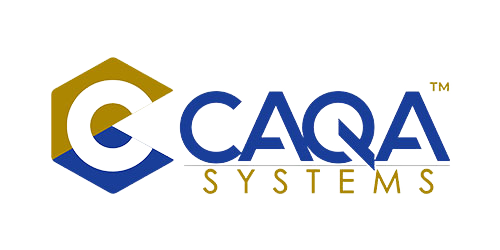In a gleaming training facility on the outskirts of a major Australian regional hub, apprentice mechanics work on hybrid electric vehicles under the watchful eye of both their instructor and representatives from three major automotive manufacturers. The workshop, equipped with cutting-edge diagnostic equipment and the latest vehicle models, wasn't funded through traditional government allocations. Instead, it represents the future of VET financing: a sophisticated public-private partnership where industry investment matches government funding dollar-for-dollar.
"Five years ago, we couldn't have dreamed of facilities like this," admits the program coordinator, gesturing toward equipment that would have been financially out of reach through conventional funding channels. "Now our apprentices train on exactly the same systems they'll use in the workplace, and our industry partners have direct input into how we're developing tomorrow's workforce."
Across Australia, similar financing innovations are breathing new life into a VET sector that has long struggled with the limitations of traditional funding models. As delivery costs rise, technology needs expand, and student demographics evolve, VET providers are pioneering creative approaches that diversify revenue streams while maintaining their core educational mission.
The Perfect Storm: Challenging Traditional VET Funding
The financial foundations supporting Australia's crucial vocational education sector face unprecedented pressure from multiple directions. Traditional funding models, primarily reliant on government allocations through block grants or per-student funding formulas, are increasingly strained by competing priorities for public resources, expanded technological requirements, and changing learner needs.
These challenges manifest across the VET landscape in troubling ways. Many institutions struggle with aging infrastructure and equipment that no longer reflect current industry standards. Program offerings frequently lag behind emerging skill needs due to resource constraints limiting curriculum development. Student support services often operate with minimal funding despite growing needs for career guidance and learning assistance.
"The limitations of traditional funding approaches have become painfully apparent," explains a financial analyst who specialises in education sector sustainability. "Government funding, while essential, fluctuates with political and economic cycles rather than workforce development needs. Per-student funding models struggle to account for the varying resource requirements of different vocational programs, from equipment-intensive trades to technology-focused fields with rapidly evolving infrastructure needs."
The financial pressure isn't uniform across the Pacific region. In Samoa, government funding accounts for 63% of all VET funding, while student fees make up 21% and private resources 16%. Across seven Pacific countries (excluding the Australia-Pacific Technical College), student fees provide an estimated 35% of recurrent funding for VET providers, a significant contribution that raises important questions about balancing access with financial sustainability.
Within Australia's complex federal system, the situation becomes even more challenging as responsibilities and funding are split between federal and state governments, sometimes creating uncertainty and instability for providers trying to plan for the future.
"Without adequate and sustainable funding, the sector's ability to fulfil its mission of providing relevant, high-quality skills development becomes increasingly compromised," notes a long-time VET sector leader. "The question isn't whether we need new funding approaches, it's which innovations will deliver the greatest benefit while maintaining our commitment to quality and access for all learners."
Public-Private Partnerships: Shared Investment for Mutual Benefit
Among the most promising approaches for sustainable VET financing are public-private partnerships (PPPs) that share investment responsibilities between government entities, industry partners, and education providers.
These collaborative arrangements leverage the strengths of each sector, the public commitment to broad access and quality standards, combined with industry's specialised knowledge and resources. Effective PPP models typically involve industry co-investment in training facilities, equipment, and program development alongside public funding for core educational delivery and student support.
"We're seeing remarkable results when these partnerships are structured thoughtfully," observes an industry engagement specialist who has helped broker several successful PPPs across Australia. "The key is moving beyond transactional relationships to establish genuine governance partnerships where industry stakeholders participate meaningfully in program development, quality assurance, and strategic planning."
Successful implementations include industry-sponsored training centres where companies provide equipment, technical expertise, and workplace learning opportunities while governments fund instructor salaries and core curriculum development. These partnerships create mutual benefits; employers gain access to custom-trained graduates and professional development opportunities for current staff, while VET institutions receive resources that enhance program quality and industry relevance beyond what government funding alone could provide.
One striking example comes from Australia's resources sector, where a consortium of mining companies has partnered with regional VET institutes to create specialised training hubs. The companies provide millions in equipment, technical expertise, and workplace learning placements, while the government maintains core funding for facilities and teaching staff.
"Our graduates are job-ready from day one because they've trained on exactly the same systems they'll use in the workplace," explains a program manager from the initiative. "And our industry partners see direct benefits through reduced onboarding costs and higher retention rates. It's genuinely win-win."
Employer Contribution Systems: Industry Investment in Workforce Development
Employer contribution systems represent another significant approach to diversifying VET funding through structured industry investment in skills development. These systems typically involve levies or contributions based on payroll that create dedicated funding pools for vocational training related to specific industries or occupational areas.
"Well-designed employer contribution models establish direct connections between industry needs and training resources," explains a policy researcher specialising in workforce development financing. "They ensure that all employers, not just the most forward-thinking, contribute to developing the skilled workforce from which they all benefit, addressing the 'free rider' problem where some companies poach talent rather than investing in development."
Different implementation models exist internationally, each with distinctive characteristics. Some systems operate through industry-specific training funds administered by sector bodies that collect levies and allocate resources based on industry-determined priorities. Others implement broader national training levies that support workforce development across sectors, often with mechanisms that reward employers providing quality training opportunities.
Successful employer contribution systems typically include incentive mechanisms that encourage direct training investment. These might include levy exemptions or reductions for employers providing approved apprenticeships or traineeships, matching funding for collaborative training initiatives, or preferential access to industry-specific programs for contributing employers.
"The most sophisticated systems combine financing functions with quality assurance, industry intelligence gathering, and strategic workforce planning," notes an industry association leader who oversees one such fund in the construction sector. "We're not just collecting money, we're developing a comprehensive approach to sector skill development that ensures training actually meets emerging needs and delivers real value for employers."
Income-Contingent Loans: Balancing Student Investment and Access
Income-contingent loan programs offer another innovative approach to vocational education financing, particularly for higher-level qualifications where individual benefits justify personal investment alongside public funding.
These loan systems allow students to defer training costs until they achieve employment outcomes that enable repayment, with obligations typically calculated as a percentage of income above defined thresholds. By connecting repayment to financial capacity, these models reduce financial barriers to participation while establishing reasonable expectations for individual investment in career development.
Australia's experience with income-contingent loans in the VET sector illustrates both the potential and pitfalls of this approach. The VET FEE-HELP scheme, introduced in 2009, led to a rapid expansion in funding, peaking at nearly $3 billion in 2015, but was replaced by the more restricted VET Student Loans program in 2017 after serious concerns about sustainability and quality.
"The initial implementation demonstrated the tremendous demand for financing options that remove upfront barriers to participation," reflects a policy advisor who was involved in both programs. "But it also showed how critical robust quality assurance and appropriate loan caps are to preventing exploitation and ensuring sustainable outcomes."
Under the current VET Student Loans program, loans are capped with the highest band at approximately $16,000 per year (2021), and eligibility is restricted to approved providers and courses with strong employment outcomes. Only about 15% of diploma and higher-level VET students currently receive loans, less than 2% of all VET students, a dramatic reduction from the peak of the VET FEE-HELP program.
The painful transition between programs included billions in VET FEE-HELP debt cancellations due to inappropriate conduct by some providers, with over $500 million in waivers recommended in 2020 alone. These experiences have shaped widespread agreement that effective income-contingent loan systems for VET must include strong consumer protections, appropriate loan limits aligned with realistic earning potential, and robust quality assurance mechanisms.
Social Impact Bonds and Outcomes-Based Funding: Financing for Results
Perhaps the most innovative approaches to VET financing are social impact bonds (SIBs) and related outcomes-based funding models that directly connect investment to measurable results.
These mechanisms involve private investors providing upfront funding for specific vocational initiatives, with government repayment based on achievement of predetermined outcomes such as employment placement, earnings increases, or reduced social service utilisation. By transferring performance risk to investors while maintaining focus on social outcomes, these models create powerful incentives for program effectiveness.
"Social impact bonds fundamentally change the dynamics of vocational training for disadvantaged groups," explains a social finance specialist who has helped structure several education-focused SIBs. "Instead of paying for inputs, classroom hours, materials, and instructor time, the government only pays when real outcomes are achieved. This creates powerful alignment between financial incentives and actual student success."
The SIB model proves particularly suitable for vocational initiatives targeting disadvantaged populations or addressing persistent skill gaps where traditional approaches have shown limited success. Implementation typically involves several key partners: investors who provide capital, service providers (often VET institutions) who deliver training, government entities who repay investors based on results, and independent evaluators who assess outcome achievement.
Early implementations in Australia demonstrate promising potential, particularly for programs serving populations that have historically been poorly served by mainstream approaches. Vocational SIBs focusing on unemployed youth, career transitions for displaced workers, and skills development for marginalised populations have shown how this financing approach can support innovative program design while maintaining focus on meaningful employment outcomes.
"The beauty of these models is they encourage holistic approaches that integrate technical training with support services, job placement assistance, and employer engagement," notes a program director who oversees an SIB-funded initiative. "Because payment depends on sustainable employment, not just training completion, we're incentivised to address all the barriers our participants face, not just skill deficits."
Performance-Based Funding: Incentivising Outcomes that Matter
Performance-based funding models create direct connections between resource allocation and measurable results, establishing financial incentives for institutions to focus on completion, employment outcomes, and other indicators of program effectiveness.
These approaches typically maintain core operational funding while allocating a portion of resources based on the achievement of specific performance metrics. When thoughtfully designed, these systems can drive continuous improvement and strategic focus while maintaining essential services and educational access.
"Performance-based funding is increasingly common across Australia's VET sector," observes a policy researcher who tracks funding innovations nationally. "The key is careful attention to metric selection and weighting to ensure balanced incentives that actually improve student outcomes without creating perverse incentives or disadvantaging institutions serving challenging populations."
Comprehensive frameworks typically include measures of program completion and credential attainment, post-completion employment and earnings, service to priority populations, and alignment with identified skill shortages or economic development priorities. The most sophisticated systems include equity adjustments that recognise the additional resources required to support disadvantaged learners, preventing unintended consequences where institutions might focus exclusively on students most likely to succeed, regardless of support.
In Victoria, for example, government subsidies for VET are adjusted based on labour market demand. In 2020, trade apprentices received a $14 per hour subsidy for off-the-job training, while non-apprentices in the same course received $11 per hour, a clear signal of government priorities and employment outcomes.
"The implementation process requires careful planning and stakeholder engagement," cautions an institutional leader who has navigated the transition to performance-based models. "Phased introduction with gradual increases in the proportion of funding tied to performance allows institutions to adapt without destabilising core operations. Transparent data systems and reporting mechanisms ensure all stakeholders understand performance expectations and progress toward targets."
Technology-Enabled Delivery and Shared Services: Extending Reach While Managing Costs
Digital learning technologies and shared service arrangements offer significant potential for extending vocational education's reach while managing delivery costs.
Over 80% of Australian VET providers now use digital platforms for at least part of their delivery, enabling more flexible learning options that accommodate working students and those in remote locations. While hands-on skills training remains essential for most vocational programs, blended models that combine online learning with targeted face-to-face sessions can reduce facility requirements, increase instructor productivity, and improve access for students in regional and remote areas.
"Effective technology-enabled models go beyond simply moving existing materials online," explains a digital learning specialist who consults with VET providers across Australia. "Interactive simulations allow practice of complex procedures before accessing limited equipment resources; adaptive learning systems provide personalised pathways based on individual progress; video demonstration libraries enable repeated viewing of technical processes; and virtual reality applications create immersive learning environments for hazardous or rarely encountered scenarios."
Shared service arrangements and collaborative resource models complement these technological approaches by enabling multiple VET providers to share administrative functions, specialised facilities, technology infrastructure, or expert personnel. Practical implementations include regional training hubs where multiple providers share access to expensive equipment and specialised facilities; centralised student management systems serving multiple institutions; shared procurement arrangements leveraging collective purchasing power; and collaborative staffing models for specialised technical areas.
"These approaches create genuine economies of scale," notes a regional education director who oversees a multi-provider collaboration in rural Australia. "A single institution might struggle to justify investment in advanced manufacturing equipment or specialised healthcare simulation facilities. But when three or four providers share these resources, suddenly cutting-edge training becomes viable even in regional areas."
The financial models to support these approaches require careful planning beyond initial investment. Sustainable approaches typically involve pooled resources across multiple programs to support the development of high-quality digital assets, revenue-sharing arrangements with technology partners, and realistic budget provisions for ongoing maintenance and periodic renewal of both infrastructure and content.
Equity and Inclusion: Ensuring Access for All
While pursuing financial sustainability, innovative funding models must maintain VET's crucial role in providing economic opportunity and social mobility. Several approaches show particular promise in promoting equitable access alongside financial viability.
Targeted voucher and scholarship programs direct additional resources to disadvantaged learners, including low-income individuals, regional and remote populations, Indigenous communities, people with disabilities, and those experiencing structural unemployment,while maintaining appropriate investment expectations for students with greater financial capacity.
"Well-designed equity programs combine financial support with wrap-around services addressing non-financial barriers to successful participation," explains an equity specialist who has developed several targeted scholarship initiatives. "We know that financial assistance alone often isn't enough; students from disadvantaged backgrounds frequently need additional learning support, mentoring, cultural accommodation, or practical assistance with transportation or childcare to successfully complete their training."
Implementation models range from government-funded scholarship programs targeting specific equity groups to employer-sponsored vouchers supporting training in shortage occupations, foundation-funded initiatives focusing on particular communities, and institutional scholarship programs leveraging philanthropic contributions. Financial sustainability for these programs often involves blended funding models drawing on multiple sources rather than relying exclusively on government allocations.
Place-based funding models recognise the unique challenges of delivering vocational training in regional, rural, and remote communities. Effective implementations typically involve loading factors that account for the genuine additional costs of non-metropolitan delivery, including higher per-student overheads in smaller cohorts, increased expenses for attracting and retaining qualified instructors, and greater distances for workplace learning supervision and assessment.
"The most innovative place-based approaches move beyond simple cost adjustments to embrace community-embedded delivery models," notes a regional development specialist who has helped establish several rural training initiatives. "Vocational education becomes an integral component of regional development strategies, with multi-purpose facilities where VET providers share infrastructure with other community services, technology-enabled delivery hubs connecting regional learners to specialised programs, and entrepreneurial training initiatives directly linked to identified regional economic opportunities."
These approaches recognise regional vocational education as essential infrastructure rather than merely service delivery, creating more sustainable foundations for inclusive skills development across diverse communities.
Capital and Infrastructure Grants: Building for the Future
Another important piece of the funding puzzle involves capital and infrastructure grants specifically designed to help VET providers upgrade facilities, purchase equipment, or invest in new technology. These grants, often made available through state or federal government initiatives or matched industry funding, allow providers to make investments that would be difficult to fund through regular operational budgets.
"Modern vocational training requires sophisticated facilities and equipment that mirror what students will use in the workplace," explains a VET infrastructure specialist. "Without dedicated capital funding streams, many providers simply can't make the investments needed to deliver industry-relevant training, especially in equipment-intensive fields."
Successful providers are increasingly leveraging these grant opportunities as part of comprehensive funding strategies. By combining capital grants with industry co-investment, operational funding, and targeted program support, they're able to create world-class training environments that would be impossible through any single funding stream alone.
Competitive and Contestable Funding: Encouraging Innovation
Australia's VET funding landscape also includes significant competitive and contestable funding elements, where providers compete for delivery contracts, specialised programs, or innovation grants. These mechanisms introduce market-like incentives while allowing governments to direct resources toward priority areas or promising approaches.
"Competitive funding creates powerful incentives for providers to differentiate their offerings, demonstrate clear outcomes, and continually improve their delivery models," notes a policy analyst who specialises in education market design. "When done well, it can drive innovation and quality across the entire sector."
Examples include competitive tendering for specific training programs, user-choice models where students can select their preferred provider with government funding following their choice, and innovation grants that support the development and testing of novel approaches to persistent challenges. These mechanisms complement more stable base funding while encouraging responsiveness and continuous improvement.
From Innovation to Implementation: Making It Work
Translating innovative financing concepts into effective implementation requires thoughtful planning, stakeholder engagement, and appropriate governance frameworks. Several key considerations prove particularly important for successful implementation.
Supportive policy and regulatory environments create essential foundations for innovative financing approaches. Effective frameworks establish clear parameters while allowing flexibility for adaptation to different contexts and evolution based on implementation experience. Key elements typically include legislative provisions enabling diverse funding mechanisms, quality assurance frameworks that maintain standards while accommodating innovative delivery, and clear guidelines for public-private partnerships that protect public interests while enabling genuine collaboration.
"Developing these enabling frameworks requires collaborative engagement between government agencies, industry bodies, education providers, and community stakeholders," advises a policy expert who has helped craft several recent VET funding reforms. "Regulatory sandboxes, controlled environments for testing innovative approaches with modified compliance requirements, can provide valuable implementation insights before widespread adoption."
Effective governance frameworks balance institutional autonomy needed for innovation with appropriate accountability for resource utilisation and outcomes. These frameworks establish clear roles and responsibilities across different stakeholders while maintaining focus on core educational missions and equity principles. The most effective accountability systems focus on meaningful outcomes rather than compliance with narrow process requirements, establishing reasonable performance expectations while maintaining core quality standards.
Implementing innovative financing approaches also requires effective change management strategies that build understanding and support among affected stakeholders. Faculty and staff need assurance that efficiency improvements won't compromise educational quality or working conditions. Students require clarity about how funding changes affect their costs and support services. Industry partners want confidence that their investments will yield genuine workforce capability improvements.
"The most successful implementations maintain focus on vocational education's core purposes rather than allowing funding mechanisms to distort educational priorities," emphasises a VET sector leader with decades of experience navigating funding changes. "At its best, VET provides accessible pathways to meaningful employment, supports industry with relevant capabilities, and creates opportunities for individuals to develop skills valued in both economic and social contexts. Every financing innovation should be evaluated against these fundamental purposes."
Building a Sustainable Future for Australia's VET Sector
As Australia navigates complex economic transitions, from pandemic recovery to climate response, technological transformation to demographic change, the VET sector's role in developing workforce capabilities becomes increasingly crucial. Innovative financing approaches offer pathways to sustainability that can support this essential mission while maintaining core commitments to quality, accessibility, and industry relevance.
The most promising approaches combine multiple financing strategies tailored to specific contexts rather than pursuing one-size-fits-all solutions. Different program types, student populations, and institutional missions may require different funding mechanisms. Rural healthcare training presents different challenges than urban digital skills development; entry-level qualifications involve different considerations than advanced technical specialisations.
"The future of VET funding will undoubtedly involve more diverse revenue streams, greater industry involvement, and a stronger focus on measurable outcomes and equity," predicts a strategic analyst who advises both government and institutional leaders on sector sustainability. "But the specific mix of approaches will necessarily vary across different regions, industries, and qualification levels."
What remains constant is the imperative to build sustainable financial models that enable the sector to fulfil its essential educational and economic functions. By pursuing thoughtful innovation that maintains focus on core purposes while embracing new possibilities, Australia's VET sector can secure the resources needed to develop workforce capabilities that drive prosperity and opportunity for decades to come.
Back in that automotive training centre, students move between hybrid vehicles and computer diagnostic stations, developing skills that seamlessly blend mechanical expertise with digital capabilities. Their learning environment, created through innovative financing that combines public investment with industry contribution, represents not just a solution to funding challenges but a new model for education that more closely integrates learning with industry practice.
"This isn't just about finding more money," reflects the centre's director, watching students collaborate with both instructors and industry mentors. "It's about reimagining how we develop capabilities that serve both individual learners and the broader economy. When we get the funding model right, everything else becomes possible."


































